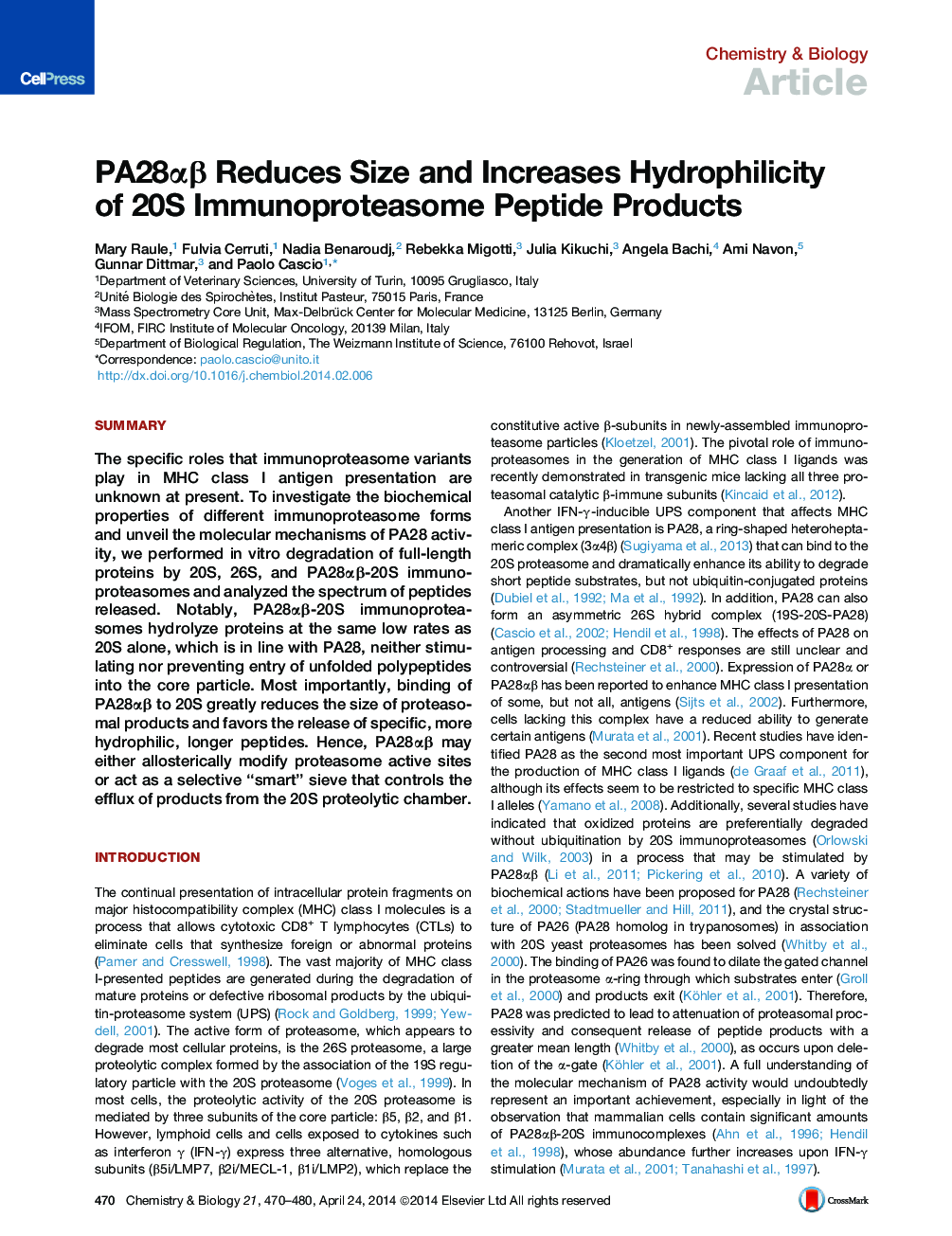| Article ID | Journal | Published Year | Pages | File Type |
|---|---|---|---|---|
| 1391093 | Chemistry & Biology | 2014 | 11 Pages |
•PA28αβ-20S immunoproteasomes hydrolyze proteins at the same low rates as 20S alone•Binding of PA28 to 20S greatly reduces mean and median proteasomal product size•PA28αβ favors the release of specific longer peptides (up to 23 residues) from 20S•Longer peptides released in the presence of PA28 have greater hydrophilicity
SummaryThe specific roles that immunoproteasome variants play in MHC class I antigen presentation are unknown at present. To investigate the biochemical properties of different immunoproteasome forms and unveil the molecular mechanisms of PA28 activity, we performed in vitro degradation of full-length proteins by 20S, 26S, and PA28αβ-20S immunoproteasomes and analyzed the spectrum of peptides released. Notably, PA28αβ-20S immunoproteasomes hydrolyze proteins at the same low rates as 20S alone, which is in line with PA28, neither stimulating nor preventing entry of unfolded polypeptides into the core particle. Most importantly, binding of PA28αβ to 20S greatly reduces the size of proteasomal products and favors the release of specific, more hydrophilic, longer peptides. Hence, PA28αβ may either allosterically modify proteasome active sites or act as a selective “smart” sieve that controls the efflux of products from the 20S proteolytic chamber.
Graphical AbstractFigure optionsDownload full-size imageDownload high-quality image (131 K)Download as PowerPoint slide
